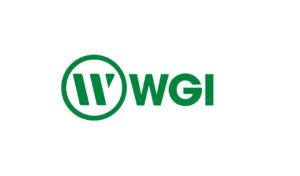STB releases independent study on railroad competition
Written by jroodAn independent team of consultants charged with looking at competitiveness in the U.S. rail industry has found that railroad rates have been steadily increasing since 2004, with a particularly steep increase in 2008. But Christensen Associates, Inc., of Madison, Wis., found that the rate increases were driven by fluctuating fuel prices and other costs and did not appear to reflect a greater exercise of railroad market power over captive shippers.
The updated study, which
now includes data from 1987 through 2008, found that a greater share of traffic
in 2007 and 2008 moved at rates less than 180 percent of variable costs than in
2005 and 2006. Variable costs include fuel, labor and other non-capital costs
associated with moving freight. Christensen also observed that, since late
2008, railroad traffic has dropped nearly 20 percent from the levels of 2006
and 2007. And Christensen said preliminary data show that rail transportation
rates fell last year.
While it was able to form
conclusions about railroad rates, the Christensen team was unable to evaluate
many of the shippers’ service quality concerns beyond anecdotal evidence.
Christensen urged the Board to develop better empirical data to capture the
service performance of rail carriers.
In 2007, the Board hired
Christensen to assess the state of competition in the rail industry. The
consultants engaged in extensive outreach efforts to shippers, railroads, trade
associations and other stakeholders. Using data from many sources, including
the Board, Christensen released its initial report in November 2008. However,
shippers raised concerns that the report’s study period ended in 2006 and did
not include subsequent years of rapidly escalating rates. The Board therefore
directed Christensen to update its competition study to include the years 2007
and 2008.
Overall, the updated study
painted a portrait of a healthy rail industry that, since 2006, has remained
largely revenue sufficient, meaning railroads are able to cover their operating
costs and earn a rate of return that enables them to attract investment capital
to pay for more locomotives, railcars and make other improvements. The study
also found that the large productivity gains in the 1980s and 1990s-when the
railroads shed excess rail lines, reduced crew sizes, and streamlined
operations-are no longer strong enough to offset rising operating cost. Since
2002, "increases in the rate of input price growth combined with slower
productivity growth have resulted in unit cost increases." "Economies
of density," the study also reports, "appear to have been exhausted
in recent years."
The Christensen report issued
today also restated the policy recommendations contained in its original
report. "Because the railroad [industry] has remained approximately
revenue sufficient in recent years, we re-emphasize one of our original
conclusions: Providing significant rate relief to some shippers will likely
result in rate increases for other shippers or threaten railroad financial
viability."
The report, "An Update
to the Study of Competition in the U.S. Freight Railroad Industry," and
the earlier full report can be found on the Board’s Web site, www.stb.dot.gov
under "E-Library" and then "Studies."
"The report from Christiansen
Associates validates that competition in the nation’s railroad industry has
been able to thrive for the last twenty-plus years under market-driven policies
overseen by the Surface Transportation Board," said AAR President and CEO
Edward R. Hamberger. "During those years, we’ve been able to increase
productivity and boost investments in our infrastructure whenever and wherever
possible – and the result is a U.S. freight rail industry second to none in the
world.
"The report found that
rate increases in recent years are in line with increased railroad costs," he
said. "The report also concluded that government regulated lower rates for some
shippers would likely result in rate increases for others, and threaten the
industry’s financial viability and ability to sustain investment in America’s
rail network. Railroads have been telling policymakers that what they need is
certainty, especially during times of such economic uncertainty.
"Rail is critically tied to
enabling the nation’s economic recovery," Hamberger noted. "It is objective
perspective such as this study that shows the system is working – and now is
not the time, when so much is at stake, to jeopardize the health of America’s
railroads, so well positioned for growth and delivering increased public
benefits."





